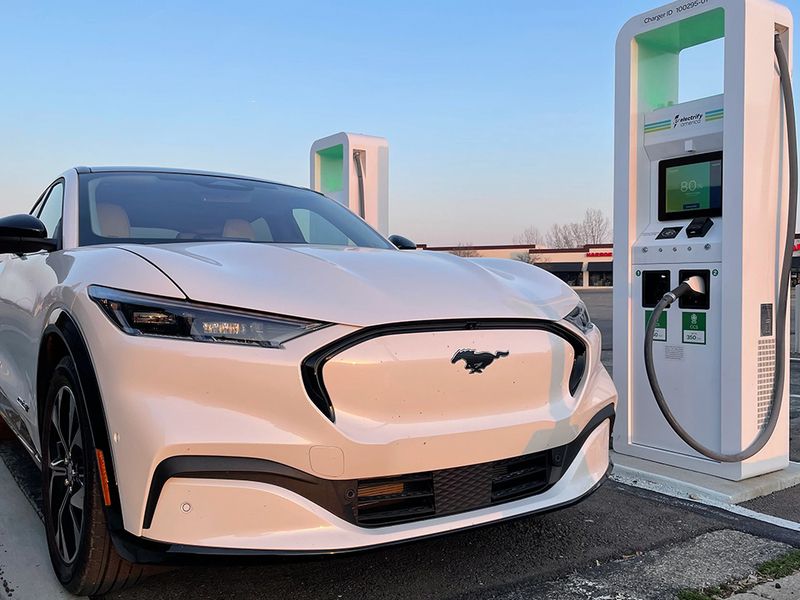
DETROIT – The Mustang Mach-E, by nearly all accounts, has been a home run in what Ford CEO Jim Farley has called the “first inning of electrification” as the automaker tries to wedge itself into a conversation dominated so far by Tesla, General Motors and Volkswagen.
Farley has referred to the vehicle as the “first credible mass-market competitor to Tesla” and in many respects, he’s right. The Mach-E is plenty capable (a prerequisite for Bill Ford to let product planners use the iconic pony logo), has impressive range and features a slew of cool new features. Plus, it’s not built in a tent.
But Tesla has a clear advantage when it comes to charging infrastructure, and that’s not going to change any time soon.
I recently received a Mach-E to evaluate and experienced firsthand the small inconveniences of relying on third-party chargers.
Ford has gone to great lengths to partner with a number of companies to offer what it calls North America’s largest EV charging network. Still, when I visited family in southeast Michigan near the Ohio border, my in-network options were mostly limited to a pair of ChargePoint stalls in the back of a gas station parking lot as well as single stations at dealerships. The closest Electrify America station was about 40 minutes – and one toll road – out of my way.
During a few days’ worth of driving I tried two stations: One ChargePoint and one Electrify America. It was a mostly seamless experience.
At the ChargePoint station, I plugged in with 103 miles of range left and pulled away one hour and 12 minutes later with 171 miles of range. I hadn’t meant to stay that long, but got caught up talking with a friendly Chevy Volt and Nissan Leaf owner who was considering an EV and was curious to see the Mach-E in person. Plugging into the station was relatively simple and required pressing one button on the FordPass app.
I thought the process would be even easier when I later pulled into an Electrify America station. Ford offers a feature called Plug&Charge, which is intended to allow owners to plug in and start charging without fumbling with a credit card or opening an app, which is what Tesla offers with its Superchargers.
But when I popped the charger into the vehicle’s outlet, I received a “charge fault” error code. While the issue was quickly remedied by activating the session through the FordPass app — I got a quick 30 miles of range in a little over 10 minutes — it wasn’t quite the seamless experience advertised.
I’m not the only one who has had challenges with Plug&Charge. Beyond that, media reports, Mach-E forums and owner Youtube channels are full of complaints over faulty charging sessions.
We’re still in the early days of the electric vehicle revolution, and there are sure to be hiccups with any new vehicle technology. For what it’s worth, Electrify America has been incredibly responsive and is looking to pinpoint exactly why my particular Plug&Charge attempt failed.
Tesla bit the proverbial bullet and invested heavily to build its industry-leading network of fast chargers. Rivian plans to do the same.
Unless Ford wants to follow suit, and there’s no indication it will, the Mach-E or any other EV it builds will be playing catch-up — if only in this one part of the ownership experience.